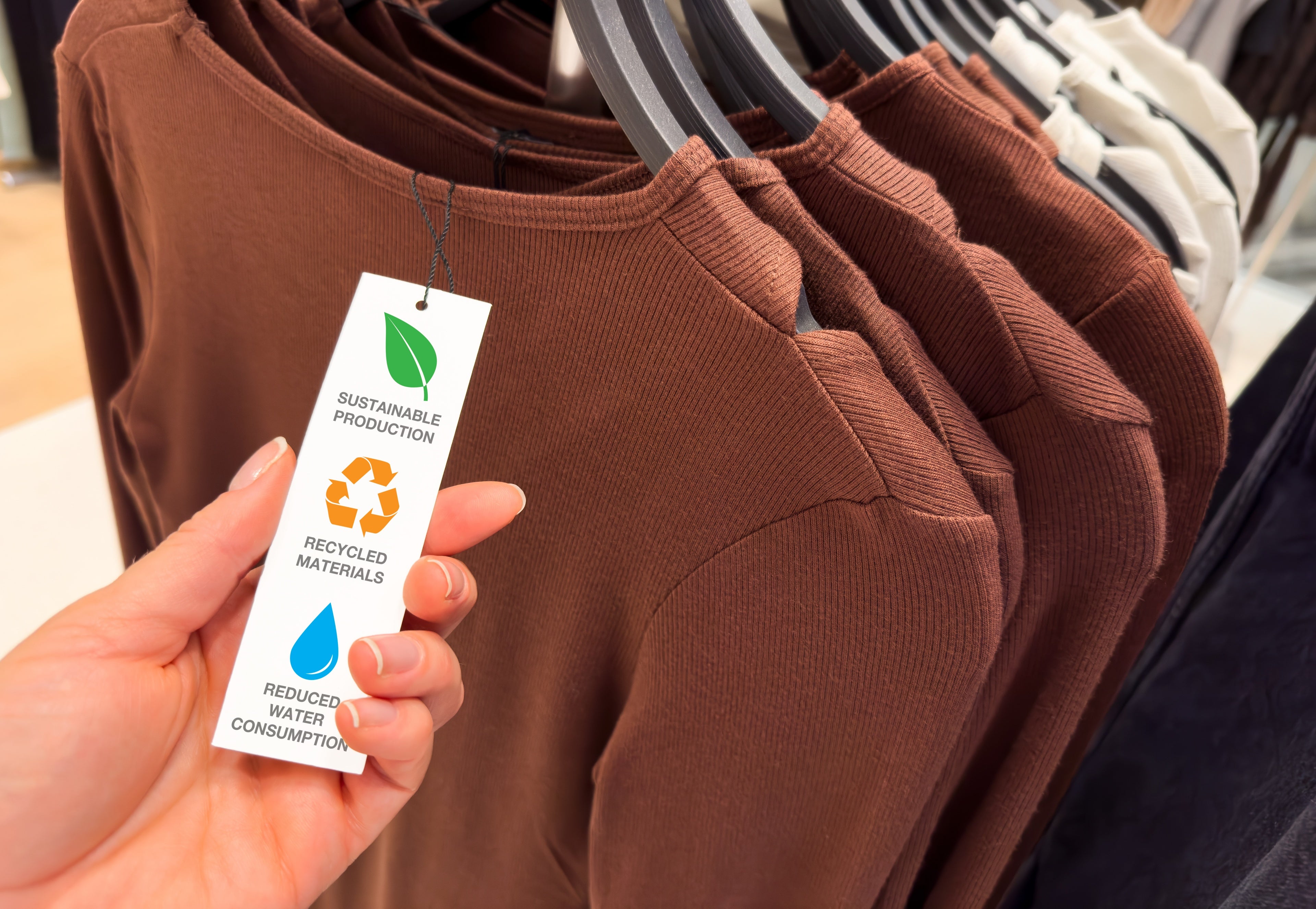Exactly How Cape Town Sustainable Fashion is Shaping Eco-Conscious Buying
Exactly How Cape Town Sustainable Fashion is Shaping Eco-Conscious Buying
Blog Article
Keep Ahead of the Contour by Discovering Cutting-edge Style Fads
In a sector as vibrant as style, remaining in advance involves greater than just following current trends-- it requires an expedition of innovation. Smart fabrics, as an example, are transforming garments right into useful work of arts, while 3D printing is changing style procedures with its customizable, waste-reducing abilities. As sustainability ends up being a cornerstone, developments like environment-friendly materials and circular fashion techniques are improving environmental duty - Cape Town Sustainable Fashion. In addition, the merging of innovation and fashion heralds a brand-new age of consumer involvement. Exactly how, then, can these arising patterns redefine the future of fashion, and what implications do they hold for brand names seeking to thrive in this advancing landscape?

Welcoming Smart Textiles
In the last few years, the fashion business has experienced a transformative change with the assimilation of smart textiles, an innovative technology that blends technology with material. This advancement stands for not just a combination of appearances and functionality but also a considerable jump in the direction of sustainability and customization in vogue. Smart fabrics, additionally referred to as e-textiles, installed advanced electronics such as sensors and conductive threads within the fabric, enabling garments to communicate with the user or the atmosphere.
These fabrics are made to monitor physiological parameters, such as heart rate or body temperature, offering real-time health analytics. Beyond health applications, smart textiles are additionally being made use of for flexible apparel, which can change shade or pattern in feedback to ecological stimulations, hence using a vibrant fashion experience.
Furthermore, the development of energy-harvesting fabrics that create power from activity or sunlight is leading the way for self-sufficient wearable innovation. This development is interesting eco mindful consumers and developers intending to decrease the environmental footprint of style. As study and growth in this field advance, clever fabrics are expected to come to be progressively prevalent, improving the landscape of contemporary fashion with their multifunctional abilities.
The Surge of 3D Printing
Reinventing the manufacturing landscape, 3D printing has arised as a game-changer in the garment industry. This innovative innovation has actually allowed developers to press the boundaries of creative thinking, creating detailed and personalized garments that were formerly unthinkable. By leveraging electronic design and additive production, 3D printing helps with the production of complex geometries and patterns, enabling developers to try out brand-new textures and frameworks.
A remarkable benefit of 3D printing in vogue is its capability to create on-demand, minimizing waste and minimizing supply demands. This effectiveness not just maximizes production processes yet also enables for fast prototyping, making it possible for designers to bring their visions to life in a shorter timeframe. Furthermore, 3D printing supports personalization to a level unrivaled by typical approaches, using distinct styles and individualized fits tailored to individual consumer preferences.
The increase of 3D printing has actually likewise equalized style, making it easily accessible to emerging designers that can currently produce high-quality items without substantial financial investment in typical production infrastructure. As technology continues to advancement, the fashion business is positioned to harness the complete capacity of 3D printing, checking out new materials and techniques that will most certainly redefine just how style is developed and generated.
Lasting Fashion Developments
As the apparel industry grapples with journalism requirement for ecological obligation, lasting style advancements have emerged at the forefront of transformative adjustment. The expanding understanding of ecological see this website impact has actually fueled a shift in the direction of even more eco-conscious methods and products. Brand names and designers are now focusing on sustainability, integrating methods that minimize waste he has a good point and reduce carbon footprints.
One substantial growth is the rise of round style, which emphasizes recycling and upcycling to expand the lifecycle of garments. This technique not just minimizes waste however also urges customers to adopt an extra conscious approach to garments consumption. In addition, using sustainable products, such as organic cotton, hemp, and recycled polyester, has actually obtained traction. These products call for much less water and energy throughout manufacturing, substantially minimizing environmental influence.
One more advancement lies in the adoption of cutting-edge dyeing methods that make use of natural dyes or waterless procedures, thereby minimizing the substantial amounts of water and chemicals commonly used in textile dyeing. Moreover, developments in biotechnology have brought about the creation of lab-grown leather and textiles, supplying cruelty-free and eco-friendly options to standard products. Via these introducing efforts, the fashion business is making purposeful strides towards a much more lasting future.

Tech-Integrated Apparel
Tech-integrated clothing represents a cutting-edge fusion of fashion and technology, improving exactly how individuals interact with their clothing. This innovative domain name is marked by the inclusion of clever fabrics and embedded electronic elements, enhancing both capability and aesthetic charm. From fitness trackers installed in sportswear to heated coats regulated by means of mobile phone apps, tech-integrated clothing provides customers unmatched convenience and flexibility.
Introducing brand names are driving this fad, concentrating on creating garments that reply to ecological stimuli or user commands. As an example, some garments can transform color or pattern in response to temperature level shifts, while others incorporate biometric sensors to monitor health metrics like heart rate or stress levels. The seamless integration of technology right into fabrics additionally expands to ecological sustainability, with efforts to develop self-cleaning materials or garments that adapt to weather problems, therefore reducing the need for numerous layers.
In addition, the arrival of wearable innovation is not just limited to clothes but extends to devices like watches and eyeglasses, additional expanding the scope of tech-integrated style. As the market remains to innovate, the possibility for modification and personalization in clothing grows, offering customers one-of-a-kind, tech-enhanced style experiences that accommodate their individual needs and choices.
Future of Virtual Style
Recently, the future of digital fashion has become a transformative pressure within the industry, leveraging advancements in electronic modern technology to redefine how style is created, experienced, and taken in. By integrating increased truth (AR), digital truth (VIRTUAL REALITY), and 3D design devices, designers can currently craft immersive and interactive experiences that go beyond websites standard fashion limits. Digital fashion permits for the creation of garments that exist only in digital atmospheres, offering limitless opportunities for advancement without the limitations of physical production.
This electronic change not only offers opportunities for innovative expression yet additionally addresses sustainability concerns intrinsic in traditional fashion methods. Cape Town Sustainable Fashion. By removing the need for physical sources, digital fashion lowers waste and reduces carbon impacts. In addition, the rise of virtual fashion lines up with the raising consumer demand for tailored and special experiences, as online garments can be tailored and tailored to individual preferences with simplicity

Final Thought
The style industry's future lies in the combination of cutting-edge technologies and sustainable techniques. Digital style is positioned to redefine customer communications.
In recent years, the fashion market has actually seen a transformative shift with the assimilation of clever fabrics, an innovative technology that mixes technology with fabric.As the fashion sector grapples with the pressing requirement for ecological obligation, lasting style innovations have emerged at the forefront of transformative change.In recent years, the future of digital fashion has actually arised as a transformative force within the market, leveraging improvements in electronic modern technology to redefine exactly how style is created, experienced, and consumed. The rise of virtual fashion aligns with the increasing consumer need for individualized and special experiences, as online garments can be personalized and tailored to individual preferences with convenience.
The style industry's future lies in the assimilation of sustainable methods and innovative innovations.
Report this page